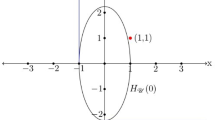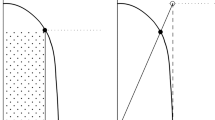Abstract.
The semivalues (as well as the least square values) propose different linear solutions for cooperative games with transferable utility. As a byproduct, they also induce a ranking of the players. So far, no systematic analysis has studied to which extent these rankings could vary for different semivalues. The aim of this paper is to compare the rankings given by different semivalues or least square values for several classes of games. Our main result states that there exist games, possibly superadditive or convex, such that the rankings of the players given by several semivalues are completely different. These results are similar to the ones D. Saari discovered in voting theory: There exist profiles of preferences such that there is no relationship among the rankings of the candidates given by different voting rules.
Similar content being viewed by others
Author information
Authors and Affiliations
Additional information
Received: 5 November 2000/Accepted: 12 February 2001
Rights and permissions
About this article
Cite this article
Laruelle, A., Merlin, V. Different least square values, different rankings. Soc Choice Welfare 19, 533–550 (2002). https://doi.org/10.1007/s003550100130
Issue Date:
DOI: https://doi.org/10.1007/s003550100130




